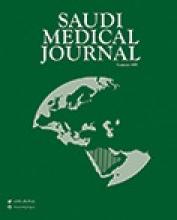Abstract
OBJECTIVE: To examine the differences between the clinical presentation, management and outcome of persons bacteremic with methicillin-resistant Staphylococcus aureus (MRSA) and methicillin-sensitive Staphylococcus aureus (MSSA), after controlling for age, sex and primary diagnosis.
METHODS: A review of the clinical records and laboratory data of all MRSA and MSSA bacteremic patients. Fifty matched case-control pairs were further analyzed looking for differences between the 2 populations. The study was carried out in a 500-bed adult tertiary care institution in southwestern Ontario, Canada, between 1994 and 1999.
RESULTS: On univariate analysis a) duration of hospitalization prior to bacteremia, b) concomitant polymicrobial bacteremia, c) time to appropriate treatment, were significantly greater in the MRSA infected population. Attributable mortality was also higher, 36%-20%, but this did not achieve significance (p=0.1). On multiple logistic regression analysis, a), b) and c) remained significantly different.
CONCLUSION: In a 1:1 matched case-control study of Staphylococcus aureus bacteremia, those infected with MRSA became bacteremic later in their hospital stay, more often had a polymicrobial bacteremia and were appropriately treated later. Although mortality attributable to the MRSA bacteremia was greater, this difference did not achieve significance.
- Copyright: © Saudi Medical Journal
This is an open-access article distributed under the terms of the Creative Commons Attribution-Noncommercial-Share Alike 3.0 Unported, which permits unrestricted use, distribution, and reproduction in any medium, provided the original work is properly cited.






